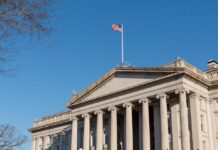The National Academies of Sciences, Engineering and Medicine said school districts “should prioritize” reopening schools, especially for grades K-5 and students with special needs. The group warned that failing to give students in-person instruction will put children at risk of falling behind academically, especially those already facing economic inequalities.
“The risks of not having face-to-face learning are especially high for young children, who may suffer long-term consequences academically if they fall behind in the early grades,” the report says.
Many others are sounding similar warnings that keeping kids home will leave them vulnerable.
Scott Gottlieb, the former commissioner of the Food and Drug Administration who has emerged as a trusted voice during the pandemic, wrote earlier this week that schools should reopen while deploying safety measures decided at the local level. He pointed out that children rarely get seriously ill from the novel coronavirus and noted that evidence is mixed on whether they transmit the virus as much as adults.
“Schools should open in the fall,” Gottlieb wrote. “It’s critical for meeting the educational and social needs of children.”
Kids are rarely hospitalized with serious cases of covid-19 and just 31 children under age 15 have died from it in the United States, according to the National Center for Health Statistics at the Centers for Disease Control.
Likewise, the American Academy of Pediatrics has also stressed the importance of in-person education, although last week it issued a joint statement with teachers unions and superintendents saying that schools in areas with high rates of coronavirus infection shouldn’t be required to open against the advice of local experts.
President Trump and his education secretary, Betsy DeVos, agree – but they’re using threats rather than persuasion.
The president has tweeted repeatedly that schools should open and even threatened to withhold funds if they don’t. Instead of touting that many experts also say schools should open, he has helped to turn the issue into an all-out political war by using threats and demonizing Democrats on the issue.
Trump has also targeted Joe Biden, the presumptive Democratic presidential nominee, who said he wants schools to open but only with safety measures and more funding to put it all in place.
The White House and Senate Republicans are developing plans to prod schools to reopen by attaching incentives or conditions to tens of billions of dollars of new aid as part of another coronavirus relief bill, The Post’s Laura Meckler and Erica Werner report.
Republican lawmakers and administration officials are also debating how to use the legislation – which may include somewhere between $50 billion and $100 billion for elementary and secondary schools — to encourage schools to reopen, my colleagues write.
Tribalism and political posturing are ruling a complex and nuanced conversation that didn’t have to turn partisan. Trump and DeVos’s demands have prompted predictable knee-jerk reactions from Democrats, resulting in black-and-white discussions that should instead be had in shades of gray.
“It didn’t have to be this way,” Robin Lake, director of the Center on Reinventing Public Education, an education research group, told me.
“Everybody in America wants kids back in school, but turning it into a simple prospect is just a transparent effort to create a political wedge issue, and that won’t serve student interests,” she said.
School districts are increasingly announcing virtual-only learning, including in some places where cases are down.
Earlier this month, a number of districts announced a hybrid approach, in which parents could choose virtual-only learning or a combination of virtual and in-person education.
Yet in the past few days, some of the nation’s largest districts in California and Georgia announced they will offer only online learning, amid mounting cases and heavy pressure from teachers unions. Schools in Nashville plan to start with virtual-only, at least through Labor Day.
Arlington Public Schools notified parents on Tuesday that it is scrapping a planned hybrid approach and will instead require its 28,000 students to start the school year entirely online, Hannah Natanson reports. Cases in northern Virginia are down dramatically, yet the district’s superintendent cited a recent increase in cases nationwide.
“Many parents who need to work will be left scrambling for child care,” Laura Meckler writes. “And while some schools found success with virtual school in the spring, it was a disaster for many, with little indication it will be drastically better in the new school year. In some ways, it may more challenging, as students will be starting with new teachers who do not know them.”
Public schools weren’t ready for virtual leaning in the spring, and many don’t seem to be ready now.
When schools quickly shuttered in March, they were far from ready to transition to online classes — and it showed. When Lake and her colleagues analyzed 477 school systems, they found just 1 in 3 expected teachers to provide instruction, track student engagement or monitor academic progress for all the students.
There were also major gaps between rural and urban or suburban districts and between richer areas and poorer ones. Lake found that school districts in affluent communities were twice as likely as those in economically disadvantaged communities to expect teachers to deliver lessons in real time to groups of students.
School districts have had several months to prepare for the fall. But of the 30 districts that have announced plans so far, only a handful have publicly indicated they’re making changes to online instruction in response to parental feedback, Lake said.
“I’m quite worried,” she said. “It’s a hard thing to figure out in a few months, and I’m concerned that every district is trying to figure it out on their own.”
Ahh, oof and ouch
AHH: The White House distanced itself from the criticisms a top trade adviser leveled against Anthony Fauci.
Trump criticized Peter Navarro for the op-ed in USA Today, telling reporters that Navarro “made a statement representing himself. He shouldn’t be doing that.”
“The president’s comments were part of a concerted effort by the White House to distance itself from the op-ed — which had the headline ‘Anthony Fauci has been wrong about everything I have interacted with him on’ — in which Navarro laid out several disagreements with Fauci, a prominent member of the White House coronavirus task force,” John Wagner and Meryl Kornfield report.
“That effort came despite moves in recent days by Trump and others in the White House to raise questions about Fauci’s credibility, including the distribution to reporters of a list of instances in which they alleged Fauci had been incorrect about aspects of the pandemic.”
When asked about the op-ed, Trump also said at the White House event that he gets along with Fauci.
In a tweet, White House spokeswoman Alyssa Farah insisted the Navarro op-ed was not preapproved.
Fauci called White House efforts to discredit him “bizarre” and “nonsense.”
In an interview with the Atlantic, Fauci said: “I think if you talk to reasonable people in the White House, they realize that was a major mistake on their part, because it doesn’t do anything but reflect poorly on them. … I cannot figure out in my wildest dreams why they would want to do that. I think they realize now that that was not a prudent thing to do, because it’s only reflecting negatively on them.”
He said the efforts would ultimately “hurt the president.” “When the staff lets out something like that and the entire scientific and press community push back on it, it ultimately hurts the president,” he added.
In a pointed comment at Navarro, Fauci said: “I can’t explain Peter Navarro. He’s in a world by himself. … So I don’t even want to go there.”
In Style Magazine had some things to say about Fauci:
Maryland Gov. Larry Hogan called the efforts to discredit Fauci “absolutely outrageous.”
“I think it’s absolutely outrageous. It’s one of the biggest mistakes, I think, that the administration has made throughout this entire coronavirus response, because Dr. Fauci is, in my opinion, the most respected guy in the administration, and the voice of truth and reason throughout this pandemic,” Hogan (R) said in an interview with ABC News’s Jonathan Karl and political director Rick Klein.
The governor added: “And there’s a number of mistakes that have been made, but I think sidelining him and trying to run this campaign to attack his credibility is one of their biggest mistakes so far.”
OOF: Hospital officials and health experts are worried about the administration’s protocol change for reporting coronavirus hospitalization data.
The Department of Health and Human Services notified governors and hospital leaders this week that it was changing the protocol for sending the federal government daily information about coronavirus patients, supplies and bed capacity. The administration says replacing the CDC’s data-collection system will streamline reporting and lead to more efficient distribution of supplies.
The new order took effect yesterday. Critics say it’s a bad move to change data collection in the midst of a pandemic.
“Critics…say they fear the elimination of the CDC’s role as a main data-keeper for the pandemic will be damaging, depriving states, hospitals and others of frequent analyses of data about the virus’s path in their communities,” Lena and Amy write. “Smaller hospitals, in particular, are ill-equipped to suddenly adopt new data methods, critics said, though the industry has pledged to comply with the change.”
OUCH: Seema Verma violated federal contracting rules by steering millions of dollars towards contracts benefitting GOP-connected communications consultants.
That’s the content of an inspector general report set to be released today, according to Politico, which first reported on the contracts and raised questions about their legality.
The report details how Verma, administrator of the Centers for Medicare and Medicaid Services, used federal contracts to “install allies who managed high-priority projects and exercised broad authority within CMS, while circumventing the agency’s career officials and funding projects that ethics experts have said wasted taxpayers’ money,” Politico’s Dan Diamond and Adam Cancryn report.
“The 70-page HHS inspector general report — the result of a 15-month audit — calls on HHS and CMS to take nine separate actions to address the ‘significant deficiencies’ that it identified,” Dan and Adam write. “Those actions include conducting a review of all the department’s contracts, and making a closer examination of whether CMS overpaid several of its contractors.”
Some medical researchers and Democratic lawmakers want pregnant women involved in vaccine trials.
The Food and Drug Administration usually recommends that drug companies include pregnant woman in the third phase of vaccine trials and in the coronavirus vaccine effort has advised companies to consider including pregnant woman, The 19th’s Shefali Luthra reports.
Research shows pregnant woman are especially vulnerable to the virus, yet four out of six pharma companies with government contracts to develop a vaccine haven’t included or don’t plan to include pregnant women in Phase 1 or Phase 2 trials. Moderna, which is starting a Phase 3 trial soon, announced it will exclude pregnant women from the trials.
Data from the CDC suggests that pregnant woman who are infected “appear to have a 50 percent greater chance of entering intensive hospital care because of the virus and a 70 percent greater chance of being put on a ventilator,” Shefali writes.
The fallout
A new study suggests moms are scaling back their hours more than dads during the pandemic.
The research from Washington University in St. Louis found that mothers have decreased their working hours four to five times as much as fathers as they face closed schools and day cares. As a result, the gender gap in work hours has increased by as much as 50 percent, Caroline Kitchener reports.
Caroline writes: “This disparity will likely lead women to leave the workforce in droves, said Caitlyn Collins, a sociologist at Washington University who co-authored the study. It could also trigger mass layoffs for women, as companies have to make hard choices about which employees to keep in the middle of a recession.”
Collins told Caroline that mothers are working about two hours less a week.
“That number sounds small when you say that out loud, right? But for folks who study this, these numbers are really, really dramatic,” Collins said. “If you think about how this adds up over many weeks, months and even years, it has dramatic consequences for women’s labor force participation, for their promotions, for their earnings. All these little numbers add up in the minds of our co-workers and our supervisors in ways that matter. And it matters that fathers are continuing basically business as usual.”
In the states
Oklahoma Gov. Kevin Stitt (R) is the first governor to test positive for the coronavirus.
He said he will be isolating but feels “fine.” “I felt a little bit achy yesterday. I didn’t have a fever,” Stitt said at a news conference. “I just want to be transparent with Oklahomans.”
The governor said he gets tested periodically.
“Stitt, who has resisted recommendations from public health officials throughout the pandemic, said he does not know how he got infected but does not believe his positive result could have stemmed from his attendance at President Trump’s campaign rally in Tulsa on June 20, where the governor was photographed without a mask,” Hannah Knowles and Lateshia Beachum report.
“As Oklahoma reported more than 1,000 new coronavirus cases — a single-day record as average new deaths also increase — Stitt urged residents to get tested if they aren’t feeling well but said he still did not favor a shelter-in-place order or the mask mandates increasingly embraced even by Republican leaders who were initially leery.”
In Alabama, Republican Gov. Kay Ivey is the latest state leader to reverse course after initially resisting a statewide mask order.
“Folks, the numbers just do not lie,” Ivey said at a news conference after officials in Alabama reported 2,141 new infections yesterday. Eighty-seven percent of the state’s ICU beds were occupied earlier this week, Marisa Iati reports for The Washington Post’s live blog.
But Georgia Gov. Brian Kemp is moving in the opposite direction. He is explicitly banning the state’s cities and counties from ordering people to wear masks in public places, the Associated Press reports.
Kemp “voided orders on Wednesday that at least 15 local governments across the state had adopted even though Kemp had earlier said cities and counties had no power to order masks,” the AP writes.
In Miami, a hospital group president said the system saw a 226 percent surge in covid-19 patients in the last month.
Carlos Migoya, the president and chief executive of Miami’s Jackson Health System, said in an interview on CNN’s “New Day” that the number of patients with covid-19 at Florida’s largest hospital group went from 129 on June 14 to 420 patients on July 14.
“Migoya said he met with Miami-Dade County mayors and health officials Tuesday to address how to better implement mask-wearing and social distancing to prevent the spread of covid-19, especially for visitors and young people who may spread the virus to multigenerational families that populate the community,” Hannah Denham writes for the live blog.
“The biggest issue is that we have a lot of aggressive noncompliant people, people that just do not believe that masking is the right thing to do,” Migoya said. “A lot of the young people are saying, ‘So what if I get it? If I get it, it doesn’t mean anything.’ ”
Coronavirus latest
Here are a few more stories to catch up on this morning:
More from the states:
- Masks are moving closer to becoming a national reality as more states and businesses move to mandate them, Griff Witte reports.
- The District, Maryland and Virginia reported the region’s highest daily coronavirus caseload in weeks yesterday, Fenit Nirappil, Ovetta Wiggins, Rachel Chason and Dana Hedgpeth report.
- A reporter bluntly asked Gov. Ron DeSantis (R) during a news conference: “How many more people have to die before you consider scaling back on your reopening plans?” “The question came as Florida’s death toll hit 4,626, with 112 new deaths reported Wednesday. In Miami-Dade, where the news conference took place, health officials logged 27 new deaths and 2,514 additional infections,” Marisa Iati reports for the live blog. DeSantis said he was taking the deaths “very seriously” but did not address whether he’s planning further restrictions.








